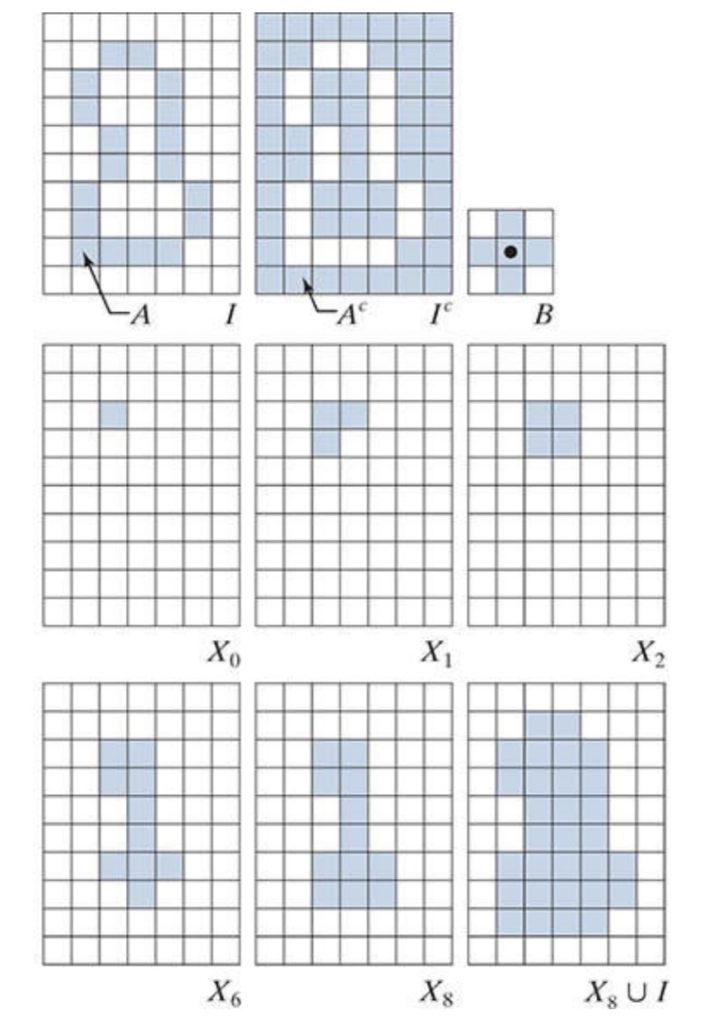How To Make Hole Filling In Image Processing Work In C#
Hole filling in image processing is a morphological operation that fills in shapes of black pixels surrounded by white pixels.
Filter by Category
Hole filling or region filling in image processing is a morphological operation. Furthermore, as its name might suggest, it fills holes inside hollow shapes. We define these hollow shapes or holes as background pixels enclosed by a border of foreground pixels.
We will talk about how to apply this process to binary images. Therefore, we will work with images that consist of pixels of either black or white pixels. Furthermore, we will call white pixels foreground pixels and black pixels background pixels.
All morphological processes are based on two fundamental operations, which are erosion and dilation. In our case here, hole filling is based on dilation process, which basically grows objects represented by foreground pixels.
We deal with various operations in image processing and hole filling is one of the non-linear, which means that its result depends only on positions of foreground and background pixels. Therefore, in morphological processes in general, we divide pixels into sets.
Firstly, we need to set a point inside the shape we want to fill with foreground pixels. From there, we dilate this point so many times, that it fills the shape. However, to control the dilation, we need to dilate only the pixels inside the border so we set a condition that does that for us.
Because dilation affects every foreground pixel in the image, we need to apply this dilation process on a separate image. Therefore, we position these filling pixels where the shape on the input image is and combine the images at the end.

This is the simplest way that I could demonstrate this process. However it does have a downside, which is long computing time. The larger the shape we want to fill, more dilations it needs to perform and more time it will take to do it.
I’ve tried to make the following function as understandable as possible with comments.
public static Bitmap FillHoles(this Bitmap image, int start_x, int start_y)
{
int w = image.Width;
int h = image.Height;
BitmapData image_data = image.LockBits(
new Rectangle(0, 0, w, h),
ImageLockMode.ReadOnly,
PixelFormat.Format24bppRgb);
int bytes = image_data.Stride * image_data.Height;
byte[] buffer = new byte[bytes];
Marshal.Copy(image_data.Scan0, buffer, 0, bytes);
image.UnlockBits(image_data);
byte[] temp = new byte[bytes];
byte[] result = new byte[bytes];
//seed point
for (int c = 0; c < 3; c++)
{
temp[start_x * 3 + start_y * image_data.Stride + c] = 255;
}
while (true)
{
//iterate across the image with structuring element
for (int i = 1; i < w - 1; i++)
{
for (int j = 1; j < h - 1; j++)
{
//position of the structuring element center
int position = i * 3 + j * image_data.Stride;
//set up structuring element
for (int k = -1; k < 2; k++)
{
for (int l = -1; l < 2; l++)
{
//position of pixel overlaped by structuring element
int se_pos = position + k * 3 + l * image_data.Stride;
if (Structuring_Element.Vals[k + 1, l + 1] == 1 && buffer[se_pos] < 255)
{
for (int c = 0; c < 3; c++)
{
result[se_pos + c] = Math.Max(temp[position], result[se_pos]);
}
}
}
}
}
}
int difference = 0;
for (int i = 0; i < bytes; i++)
{
if (result[i] != temp[i])
{
temp[i] = result[i];
difference++;
}
}
if (difference == 0)
{
break;
}
}
//combine filling pixels with input image
for (int i = 0; i < bytes; i++)
{
if (result[i] < buffer[i])
{
result[i] = buffer[i];
}
}
Bitmap res_img = new Bitmap(w, h);
BitmapData res_data = res_img.LockBits(
new Rectangle(0, 0, w, h),
ImageLockMode.WriteOnly,
PixelFormat.Format24bppRgb);
Marshal.Copy(result, 0, res_data.Scan0, bytes);
res_img.UnlockBits(res_data);
return res_img;
}I hope this guide was useful in understanding the process of hole filling in image processing.
You can also download the demo project and try it out yourself.